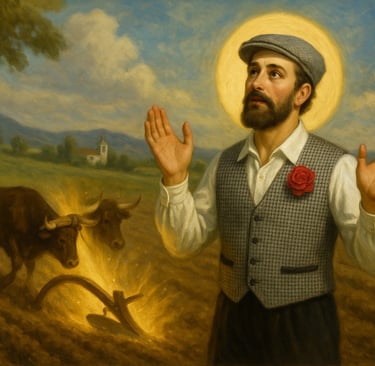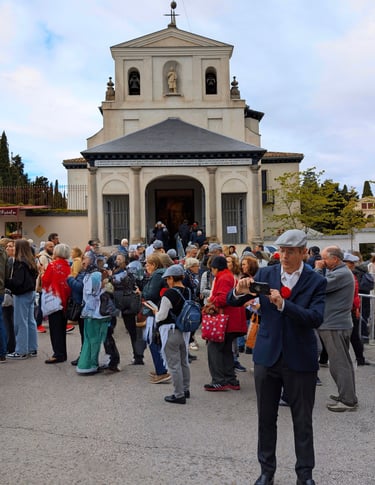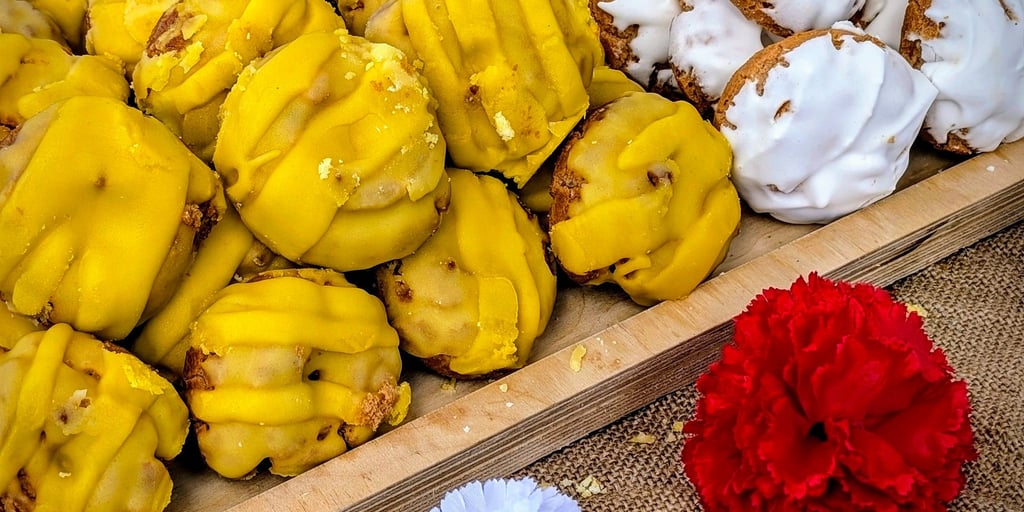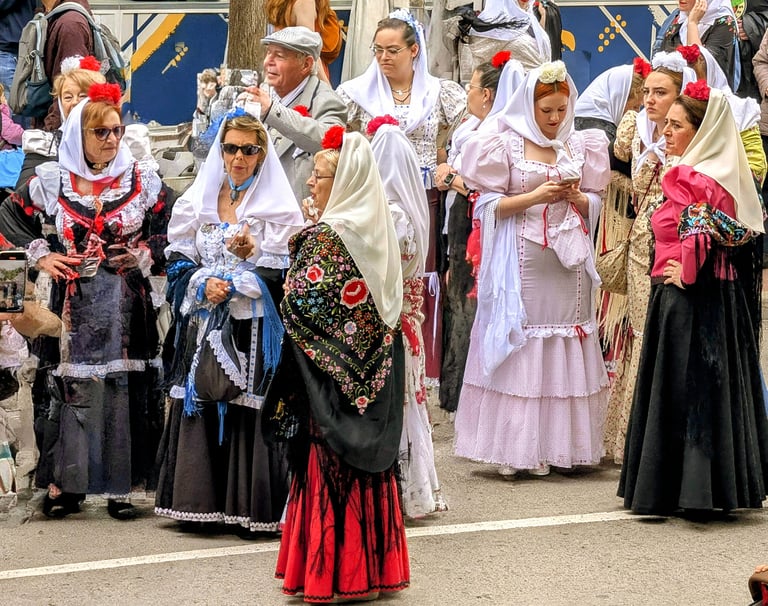San Isidro: Madrid's Patron Saint of Life Hacks
Explore Madrid’s San Isidro fest—saints, satire, odd snacks, and vintage fashion. Miracles meet mayhem in this quirky celebration of tradition.
Hungry Culture
5/22/20253 min read


Cultural exploration blog
On the 15th of May each year, Madrileños swarm the streets to celebrate San Isidro, the patron saint of Madrid. San Isidro the Farmer was notorious for showing up late for work. He took a page from the corporate world by outsourcing his ploughing responsibilities to a couple of celestial beings. It’s no wonder Madrid adores him. He’s low effort, high faith, and maximum output.
I’ve celebrated over the years in the Jardines De Las Vistillas but never journeyed to Carabanchel to see the ermita de San Isidro. So this year, I made my way to la Pradera de San Isidro and partook in the daytime activities.


438 Miracles and a Thirst for Housing
Word on the street is that San Isidro performed 438 miracles, an unusually precise number. Not to mention that is a lot of miracles for one guy—although he was outsourcing.
Making water flow was one of the miracles San Isidro is famous for. The legend attracts pilgrims chasing holy hydration, while the rest of Madrid is parched. The only miracle we’re praying for? Fair housing. We want a place that isn’t going to cost a fortune!
Chulapas and Class Warfare in Polka Dots
The biggest attraction is the Chulapas and Chulapos, big and small, roaming the streets. Everyone was dressed in their San Isidro best. The fashion of the late 19th century that originated in the Malasaña district as a class war in polka dots. The Chulapos and Chulapas weren’t just playing dress-up; they were saying fuck you to the French elite in full-blown fashion.
In Madrid, las Chulapas stand out as symbols of unique fashion. The traje de chulapa look, blends flamenco flair with a ‘Rosie the Riveter’ attitude, characterized by tight white blouses, polka-dot skirts, Manila shawls, and carnation-adorned headscarves. The Chulapos wear a white shirt, short-fitted jacket, tight-fit trousers, and a parpusa.

Dancing in the Streets: The Chotis
The chotis, Madrid’s signature dance, has Bohemian roots. Isabella II introduced it to Spain in 1850 during a royal gala, and it spread faster than a TikTok dance trend.
The chotis is still alive today during San Isidro—locals twirl in old-school rhythm while tourists film it for Instagram.
Las Rosquillas: Drywall in Disguise
San Isidro’s beloved baked goods. Las rosquillas, the donut’s dry, joyless cousin that comes in four varieties: tontas (plain), listas (glazed), de Santa Clara (with meringue), and francesas (sugar-coated).
I have tried them all. The verdict? My mouth turned into a desert. It was like chewing on sugar coated sawdust.
Stoners beware: these are not the munchies you want to be eating. You’ll be begging for a San Isidro miracle after one bite.


Big Spoon, Little Spoon
To conclude, we leave with you an interesting little morsel that isn’t mentioned in any travel guide. In 1212, San Isidro went from dirt to divinity when his corpse was exhumed. This macabre royal bedtime story reveals Spanish kings like Charles III and Philip II curled up with his remains like a security blanket with benefits. Apparently, they thought that sleeping beside Isidro’s remains could heal ailments, resolve infertility, and cancel out centuries of terrible judgement calls.
Saints, Snacks, & Subversion


So here’s to San Isidro, the patron saint of outsourcing, to the Chalupas and Chalupos, and to those dry-ass donuts. May we all work less, dance more, and miraculously find affordable rent in Madrid.
And remember, at Hungry Culture, we’re here for the weird, the folkloric, and the food-based suffering. No filters, no fluff, just culture with crumbs in its teeth.
Til the next time.
